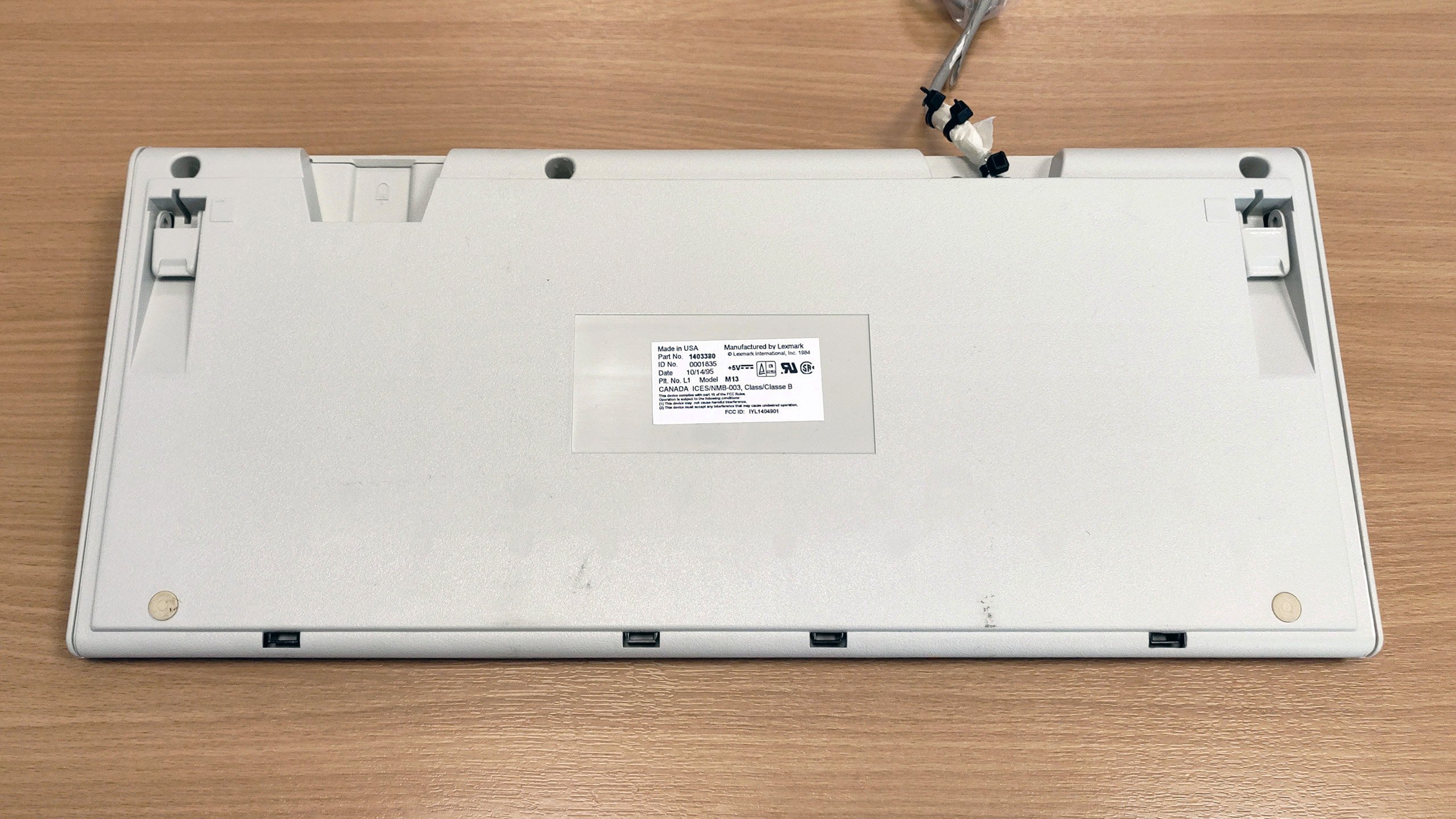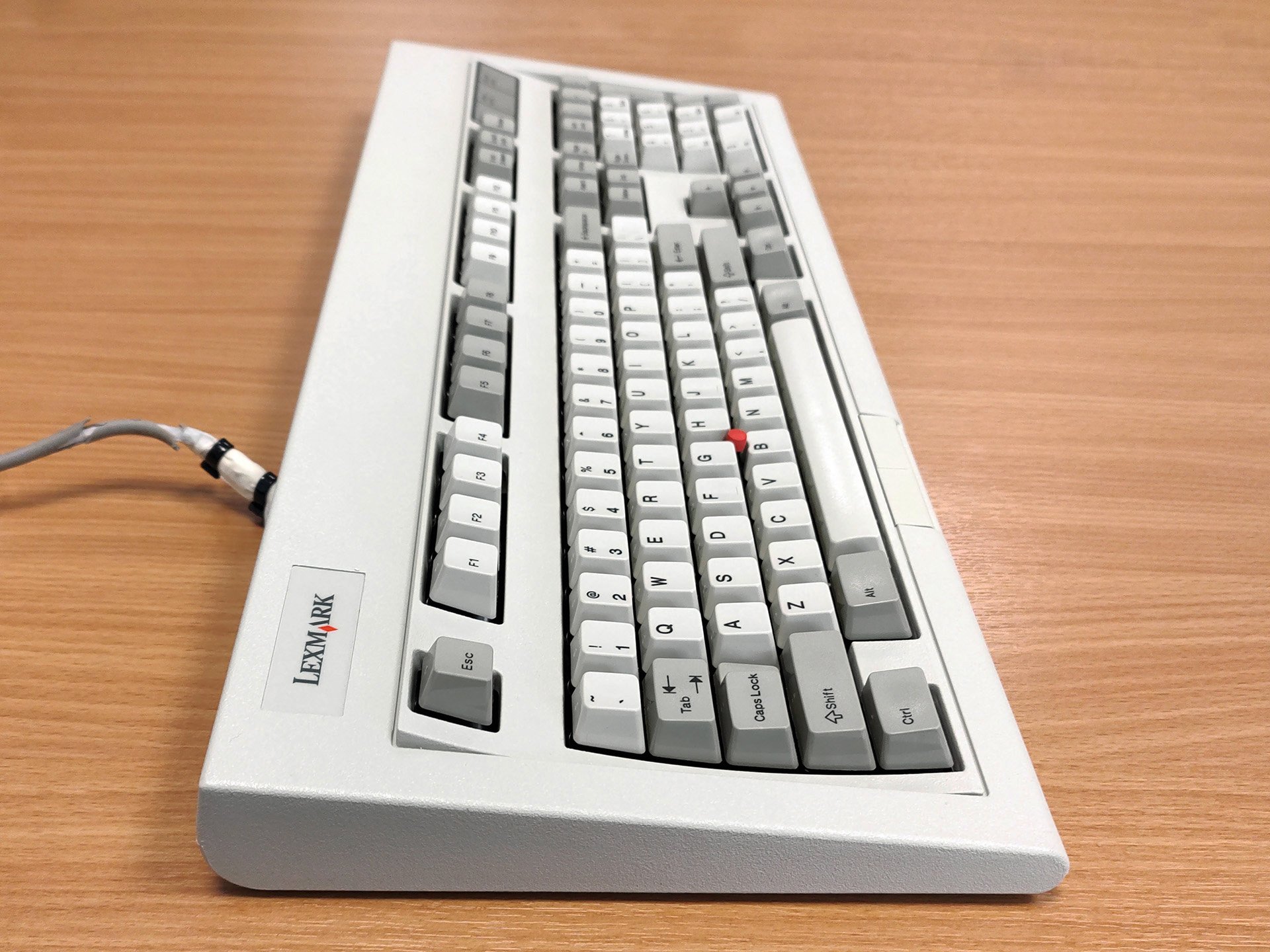This was a new-in-box Lexmark-branded Model M13, a buckling spring keyboard with a nub/nipple/whatever-you-call-it stick! Unlike most IBM-branded versions, Lexmark-branded M13s use a different kind of sensor array for the stick (force-sensing resistors instead of strain gauges) hence why Lexmark doesn't brand this as "TrackPoint". Like Unicomp EnduraPro sticks, it moves like a little joy-stick instead of remaining stationary. Instead of dual PS/2 plugs, this model has an AT full-DIN plug for the keyboard and DE-9 RS232 serial plug for the nub. For more info, see my IBM Model M13 wiki page!
In the box was also a driver disk (an image of which will soon be archived on my website and archive.org) and various Lexmark literature including a snazzy Lexmark Model M family pamphlet, a keyboard operator's guide (user guide) and something that dictates how you're supposed to a sit at a computer desk.
Upon opening, the cable quickly degraded and started shedding everywhere. In lieu of a replacement, I've tapped and wrapped already damaged parts, used cable ties to limit possible flex and left most of the cable alone in the original packing. For now though, the keyboard and cable remains operational.


